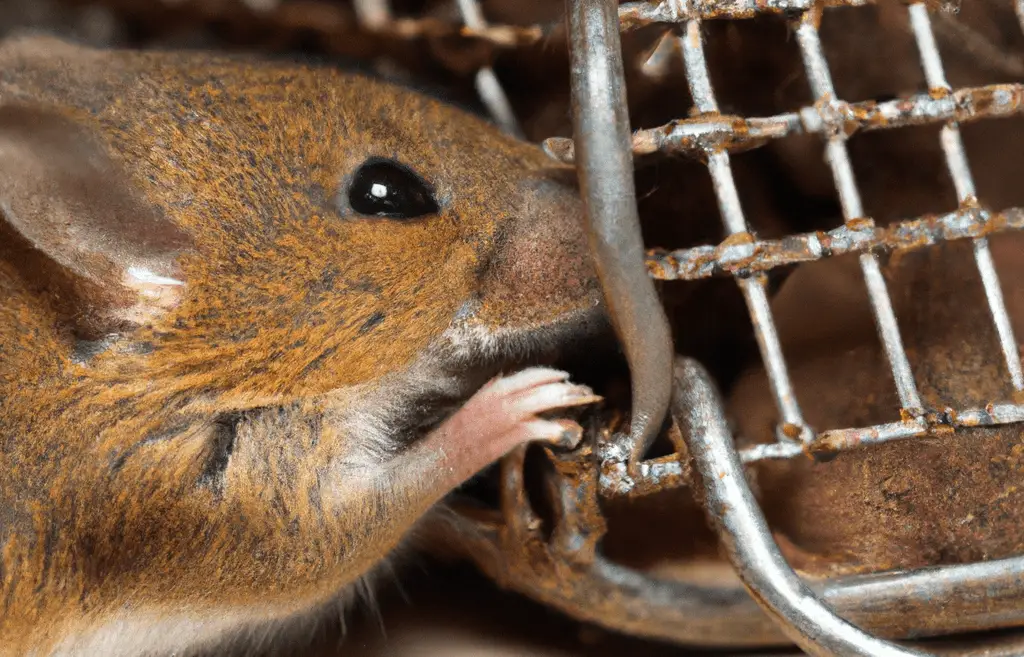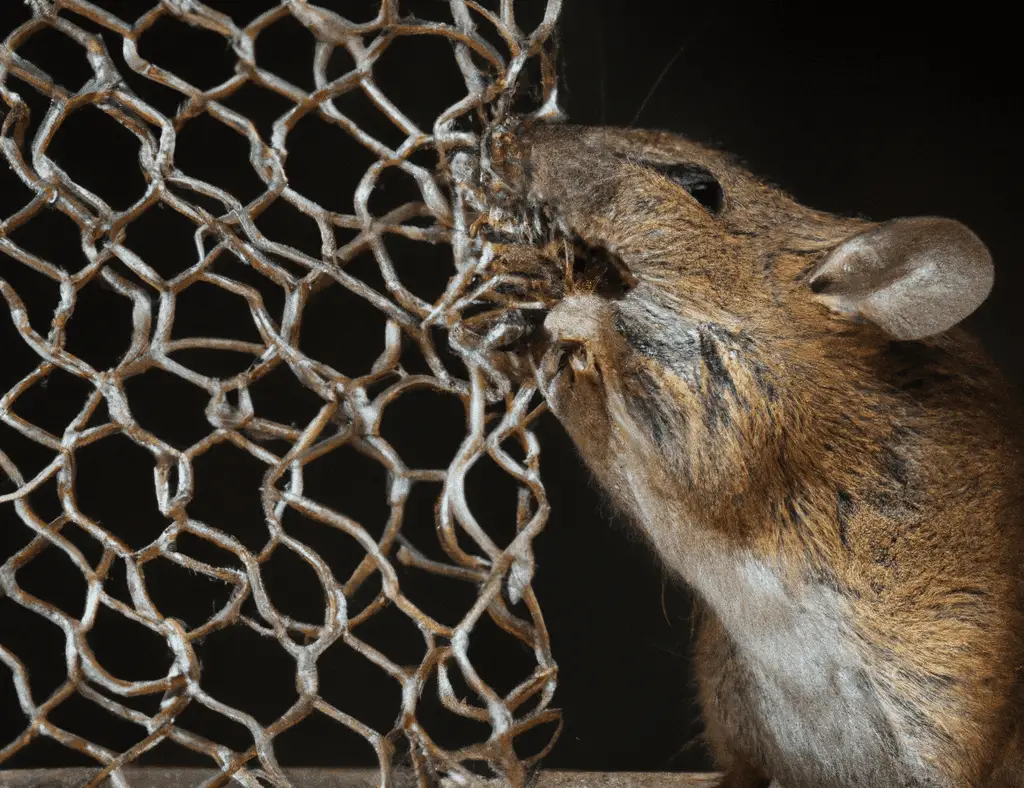Mice and rodents are always looking for a way inside our homes. Pest control experts can attempt to keep them out, but over time, parts of our house will become susceptible to mouse invasions. I keep a mouse trap in places where rodents are likely, garages and attics, but there are far too many gaps and larger holes to trap them all.
The trickiest thing about keeping rodents out of your home is that a home needs air vents and gaps between attic walls and exterior walls to stay cool in the summer. Broken vent screens and crevices in brick walls are an easy entry for mice. If you see signs of mice in your home or are looking for an effective mouse deterrent, then check out copper mesh wool as a pest block.
Can Copper Mesh Stop Mice?
Copper wire mesh can stop field mice and house mice from entering your home. A roll of copper mesh can be used to block buildings from insect entry and is perfect for stuffing into rodent holes. The copper wool mesh will not rust and is strong enough that a mouse cannot chew through it.
Copper mesh is a breathable and permeable material that water and air can escape. Home features like weeping pipes that allow excess moisture to drip out can become a way for rodents to enter your home. Durable wire mesh copper fill fabric pushed into a pipe is the cheapest option to let water leave while keeping mice out. Copper wool alone will not be enough to keep mice out of your home for long; it must be combined with the right screen type and the correct type of material to act as a permanent pest block.
What Can Mice Chew Through?

There are actually only a few things that mice cannot chew through. One of the hardest materials for mice to chew through is steel wool. When chewing through the wires, the edges become too sharp and damage the noses of the chewing mice, stopping them from entering the gap. Unfortunately, steel wool will quickly rust and become weaker, so it is not effective for exterior mouse exclusion.
| Material | Location on Home | Used For |
| Wood | Walls, roof, around openings | Framing and structure of the house |
| Plastic | Home attachments and exterior sheds/storage | Strong and flexible building applications |
| Soft Vinyl | Siding and joints | Cheap, durable weatherproofing and exterior walls |
| Rubber | Gaps under doors, windows, and garage doors | Flexible and long-lasting seals and weatherproofing around high-traffic areas |
| Low-Gauge Aluminum | Window, porch, and door screens | A strong screen type that allows air in but blocks small insects and most pests |
| Fiber Glass | Windows, Sunlights, insulation, and outdoor water features | Lightweight and insulating material that can be woven into many objects and structures |
| Improperly Cured Concrete | Foundations, basements, porches, retaining walls, and patios | Repairing cracks or fixing damage to concrete done by the house settling and other destructive forces |
| Foam | Between building interiors and around plumbing and electrical installations | Filling in gaps and adding extra insulation and support in empty spaces |
| Wires | Inside walls and around the home | Carrying electrical current, cable, and internet into the home |
| Fabric | Found on porches and around indoor/outdoor areas | A weaker type of material used for screens and other dividers, it also allows air in but is not as durable as other types of screens |
| Water Pipes | Around the foundation and inside the walls of houses | Used to move water into and out of the home as well as throughout the different rooms |
| Brick | Exterior walls and some interior areas, like the fireplace | Used to insulate homes and provide good soundproofing while being fire-resistant and durable |
Structural Materials
Materials like wood, concrete, brick, and plastic are considered extremely strong and structurally sound, but even so, a determined mouse can chew through them. Usually, a mother mouse will try to get inside the home to have baby mice and to find bulk food items. If a mouse chews through your house, you may have a difficult time sealing it back up.
Sealants and Foams
After a mouse has found its way into your home, you will likely seal the gap with expandable foam or any other countless items for sealing a home. Unfortunately, even if you use expansion foam or premium hole sealant, a mouse can still chew through it, so the signs of mice will continue. During busy times of the year, you may miss the entry points and gaps that mice can get into, and you will eventually need to locate and close them off.
Screens and Partitions
Fabric and low-gauge aluminum are often used to keep disease-carrying insects out of your home. Mice can chew through these affordable but not mouse-proof barriers and enter your home. Replacing a broken vent screen with a higher-quality stainless steel wire mesh can help keep rodents out for good. While regular maintenance can prevent damage to existing screens.
Pipes and Wires
Mice can enter homes through water pipes and electrical wires. The areas where these conduits enter our homes can also be exploited and make entrances for rodents and other pests. Mice can chew through water pipes causing leaks and serious damage to your walls. They can also start fires when they short out wires trying to build their nests in your walls.
How To Use Copper Mesh to Keep Mice Out?
BBRXX 304 Stainless Steel Woven Wire is one of the best mouse-blocking steel wools on the market, but it can be expensive and difficult to install all over the house. In most cases, mice will use existing gaps, holes you already sealed, and pipes or drains to enter your home. Being able to stuff copper wool into any existing gap and prevent mice from chewing their way in is a great option.
The most important thing to do is look for signs that mice are entering your home and try to discover where the gaps are. Once you have located the paths the mice use, try to set traps to catch or eliminate them. Make sure when you go to seal the gaps with a material copper mesh that the mice are either out of the hole or have another exit. If you trap a mouse in a hole, it may die or chew a new way out, causing even more damage and future work.
Once the hole is clear and no baby mice are inside, you can use a roll of copper mesh and stick copper stuff into the gaps. This will not prevent mice on its own as mice can easily push out fresh copper mesh if it is not sealed. Copper for rodent exclusion needs to be locked in place with something that can withstand temperature changes and moisture fluctuations.
After stuffing into rodent holes copper mesh wool material, you will need to use a foam sealant or premium hole sealant to keep the wire mesh in place. Once the foam sealant has hardened, a mouse cannot knock the copper stuff out of the hole or chew through the mesh. A roll of copper mesh is much cheaper than high-quality stainless steel woven wire and is effective at keeping mice out of your walls and pipes indoors and outdoors.



